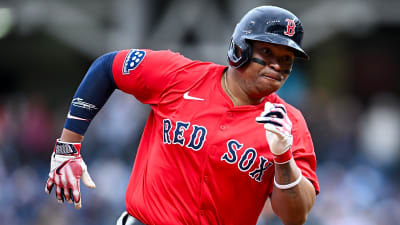
The second-round elimination of the Toronto Maple Leafs in seven games by the defending Stanley Cup champion Florida Panthers will likely result in much-needed changes. Losing in the first or second round for nine straight seasons is one thing, but the spectacularly poor performances that frequently show up when there’s a chance to advance make it impossible to rationalize continuing in this direction.
It shouldn’t come as a surprise that there has been anger, sadness, and plenty of finger-pointing after another embarrassing loss in the postseason, especially in a hockey-crazed market like Toronto, where everything is magnified. There have been some radical suggestions for what direction the organization should take next, following a disappointing end to what had the makings of a promising playoff run. We’ll examine those while introducing other impractical solutions to the mix. As a reminder, these paths are unlikely to be taken by the Maple Leafs and shouldn’t be followed by the organization this offseason, even though it would create quite a stir if they came to fruition.
Trade a Cornerstone Player
Even though Mitch Marner already has one foot out the door as a pending unrestricted free agent, and the status of John Tavares’ return is unclear, some pockets believe that isn’t enough. Auston Matthews has received some heat for his playoff struggles, notably scoring only one goal versus the Panthers and posting one point in the final four contests of the series. Still, it wasn’t for a lack of trying. Matthews led the league with 26 shots in Round 2 and had as many points in the best-of-seven as Seth Jones, Sam Bennett, and Matthew Tkachuk. It is fair to criticize Matthews because he is paid handsomely to be a difference-maker, and he wasn’t, but he did win his shifts more often than not while playing through an injury.
However, deciding now to cut bait with him to start over completely is unrealistic. Firstly, he is signed for the next three seasons and has a no-movement clause. More importantly, he has the most goals in the NHL since 2016-17, with 401 across 629 games. His closest competition is Leon Draisaitl of the Edmonton Oilers, who has 378 goals in 681 appearances. Draisaitl has the advantage in postseason production, but the Maple Leafs won’t be getting Draisaitl back in a trade involving Matthews. The return wouldn’t come close to matching Matthews’ goal-scoring prowess.
The situation with William Nylander is similar, but he is locked up for the next seven seasons with a no-movement clause. Additionally, his offence would be challenging to replace. Since 2022-23, he sits just outside the top 10 with 269 points in 246 games, and he’s tied with Nathan MacKinnon with 125 goals. The 29-year-old Nylander is also Toronto’s leader in goals (23), power-play goals (six), and points (47) since the 2020 Playoffs. He didn’t earn a point in four consecutive contests to end the Maple Leafs’ 2025 Postseason run, but he still generated good looks and has been one of the few reliable producers in crunch time in the past.
The Maple Leafs need Matthews and Nylander now more than ever. The team struggled offensively in the regular season and has failed to produce in the postseason for a while now. Dealing away elite goal scorers is the wrong direction, especially when the return won’t come close to matching what was sent the other way. It’s reminiscent of when the Griffins were offered a mystery box over a boat in an episode of Family Guy. “A boat’s a boat, but the mystery box could be anything,” Peter said. “It could even be a boat. You know how much we’ve wanted one of those” (from “I Am Peter, Hear Me Roar.” Family Guy, created by Seth MacFarlane, season 3, episode 8, Fuzzy Door Productions, 2000). The complete teardown of the roster option is there, but then the hunt will be on for general manager Brad Treliving to add players with similar skill sets. It’s an unnecessarily circuitous step when the pieces are already there to salvage the roster if it is built with better complementary players to become deeper.
Tank in 2025-26
The Maple Leafs could ignore roster changes completely, sit out the free agent frenzy and attempt to land the first overall pick in the 2026 NHL Entry Draft. It would be a great season to tank for the top selection, with offensive phenom Gavin McKenna waiting at the front of the pack. He oozes skill and creativity while possessing an excellent shot. The 17-year-old left winger compiled 41 goals and 129 points in 56 regular-season appearances with the Medicine Hat Tigers of the Western Hockey League (WHL) in 2024-25. He captured the Four Broncos Memorial Trophy, which goes to the WHL Player of the Year, and produced 38 points (nine goals, 29 assists) in 16 playoff outings en route to a WHL championship.
Toronto is short on draft picks because of trades, and the prospect pool is thin. The team’s 2026 first-rounder belongs to the Boston Bruins because of the Brandon Carlo deal, but it is top 5 protected and could slide to a 2028 first-round selection if the Maple Leafs bottom out. McKenna would provide the farm system with a significant boost, and it won’t be long before he transitions to being an impact performer at the NHL level.
While this scenario is unlikely to play out in this fashion for several reasons, the timing is perfect for a team to have a down season and hit the jackpot in the NHL Draft Lottery. McKenna is an excellent player to build around, especially for those who think the core is rotten and needs replacing. He would also be a fantastic addition to those who believe a retool can lead to a successful turnaround, though it would come at the cost of a playoff berth, which probably wouldn’t sit well with others. However, a great deal has to go right, or wrong in this instance, for the Maple Leafs to get the No. 1 draft choice.
Wait to Spend in July 2026
After Marner and Tavares, the unrestricted free agent (UFA) crop this summer includes Bennett, Brad Marchand, Aaron Ekblad, Nikolaj Ehlers, Brock Boeser, Matt Duchene, Brock Nelson, and Mikael Granlund. If the Maple Leafs retain Tavares at a hometown discount while signing two other forwards, it could comfortably keep the club in the playoff conversation and alleviate some of the depth concerns. However, it’s unclear if that will be enough to get the team over the hump.
Would the Maple Leafs be better served waiting to spend in 2026? Connor McDavid, Jack Eichel, Kirill Kaprizov, Artemi Panarin, Kyle Connor, Adrian Kempe, Martin Necas, and Alex Tuch are some of the more intriguing UFA options. They could have new contracts finalized with their existing teams as early as this summer, making any decision to wait for them fruitless. Still, the hope of McDavid playing for his hometown Maple Leafs will be ever-present, even if it remains only a pipe dream and his stay with the Edmonton Oilers is extended, which is probably the likeliest outcome.
Maple Leafs Could Benefit From Mixing Outlandish and Predictable Solutions
Advocating for any of these decisions is a tough sell, with far too many variables. If Toronto trades someone to shake things up, it could be Morgan Rielly. He struggled offensively and defensively in 2024-25, but he has a $7.5 million cap hit until the end of the 2029-30 campaign and a no-movement clause through 2027-28. The Maple Leafs will probably go shopping in free agency, but offering long-term deals and overspending for any players available this summer would be unwise. Having cap flexibility during the 2025-26 campaign could be valuable, especially if someone like Mikko Rantanen becomes available again, and saving for July 2026 could have its advantages.
More must-reads:
- Explosive third period helps Stars rally over Oilers in Game 1
- Injury thins out Saints QB competition
- The 'Active home run leaders in Major League Baseball' quiz
Breaking News
Trending News
Customize Your Newsletter
 +
+
Get the latest news and rumors, customized to your favorite sports and teams. Emailed daily. Always free!








